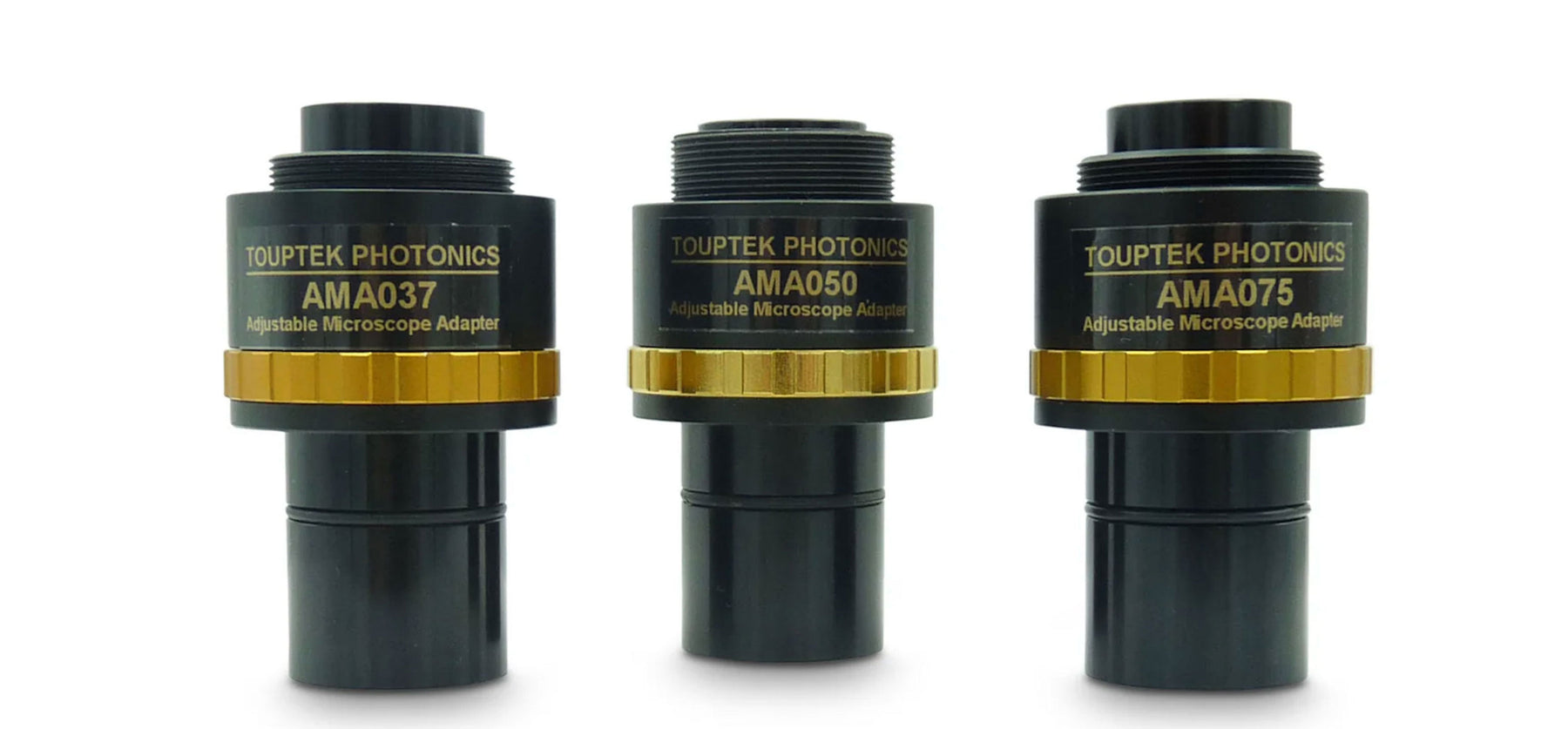
Microscope C-mount field of view
Attaching a camera to your trinocular microscope can be trickier than it first appears.
The theory is simple – just grab a C-mount adapter to connect your camera to your microscope. But you’re likely to run into issues with your field of view (the maximum area visible through the microscope), if you shop unprepared.
Let’s take a look at C-mounts and the potential problems you might encounter.
The problem with field of view.
You shouldn’t jam your camera on any old C-mount for a rather ordinary reason – shape differences!
The sensor on your camera is a rectangle. It’s the reason your photos are rectangular. Your microscope image on the other hand is very much a circle, and therein lies the problem.
You can’t comfortably fit a rectangle into a circle – you either cut off some of the circular microscope field of view or include ‘dead spots’ in the corners of your camera images.

It’s not a problem you can solve outright, but you can minimise the effects (and maximise your field of view) by choosing the right C-mount adapter.
The size of your camera sensor determines how much of your microscope’s field of view will be visible in your image.
But while you can’t change the physical size of your sensor, you can adjust the size of the image it sees using a C-mount adapter.
Generally, most people prefer to maximise their field of view without including any dead spots. This gives you an image that contains roughly 75% of the microscope’s field of view.
Whatever your field of view preference, you have to know how to match your particular camera’s sensor size with the right level of de-magnification.Matching sensors to adaptersOnce you know what you’re looking for, finding the right C-mount adapter is easy.
Every adapter is labelled with a number on the side, such as 1x, 0.65x or 0.5x. This is the level of de-magnification each adapter applies to your image, expressed as a ratio.
Your camera sensor will be a standard size, generally measured in inches, for example, 1″, 2/3″, 1/2″ and 1/3″. You might need to check the camera’s manual or search for your camera model online for this information.
Once you know your sensor size, there’s a handy trick to finding the C-mount adapter that maximises your field of view without any dark areas.
Take your sensor size in inches (for example, 2/3″) and divide the top number by the bottom number. Then you just need to find the adapter magnification that most closely matches the result.
For example: 2/3″ = 2 ÷ 3 = 0.666. The closest standard adapter is 0.7x, giving you the best field of view.
It’s not a perfect rule, but it’ll get you very close (if you’re using standard 10x eyepieces).
